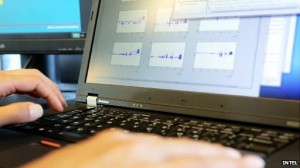Aug 14 2014
An App To Monitor Parkinson’s Disease
 In 2000 Michael J. Fox began a non-profit organization to support research into Parkinson’s Disease (PD). This was shortly after he was diagnosed with the disease. Since then Fox has been the model celebrity spokesperson and advocate. (He doesn’t kibitz, he just raises awareness and supports the science.)
In 2000 Michael J. Fox began a non-profit organization to support research into Parkinson’s Disease (PD). This was shortly after he was diagnosed with the disease. Since then Fox has been the model celebrity spokesperson and advocate. (He doesn’t kibitz, he just raises awareness and supports the science.)
Now his foundation, together with Intel, have developed a wearable device and accompanying app that can monitor the symptoms of PD in real time 24 hours a day. This is an interesting application of technology, and something that we are beginning to see more, and will likely increase in future.
PD is a neurodegenerative disease affecting a part of the brain called the substantia nigra. Neurons in that structure produce and release dopamine. These neurons are part of a circuit (the extrapyramidal system) that essentially monitors and adjusts the sensitivity or gain of the motor system. It’s a sensitive feedback loop that keeps our movement smooth. If the gain is turned up too high then we would constantly be moving and writhing. If it’s turned down too low, then we start to freeze. People with PD have the gain turned down too low.
The symptoms of PD are stiffness, decreased movement, tremors, and difficulty walking and maintaining posture. The new device is worn like a watch, and it can monitor movements with 300 data points per second. This generates about a gigabyte of data per day, which can be uploaded to a database using a smartphone app.
This massive amount of information can potentially be very useful to researchers. They will be able to map fluctuations in the control of PD symptoms throughout the day. This could be used in drug trials to record the effect of PD medication. It can be used to mine for environmental factors that affect symptoms, such as sleep, eating, and time of day.
While we have some clues, we essentially don’t know what causes PD and we don’t know how to cure it. Treatment is therefore mainly symptomatic. It’s a delicate system, and it becomes increasingly difficult to obtain good control of symptoms as the disease progresses.
Therefore, in advanced PD, making small tweaks or improvements to the treatment regimen can have a significant impact on the quality of life of PD patients.
I also love the idea of continuous real-time ambulatory monitoring of medical parameters. One of the frustrations of practicing medicine is that we often have incomplete and subjective information about what is happening with patients. We spot check things like blood pressure, laboratory values, neurological function, whatever, and otherwise rely on patient report to document how they have been doing.
There are specific tests that involve monitoring a parameter for 24 hours or so, like a Holter monitor which is essentially a 24 hour EKG.
Portable electronics and smartphones, however, open up the possibility of gathering massive amounts of objective data over long periods of time, data that can then be analyzed by computer to look for trends and anomalies.
If used correctly, this type of data can provide very useful feedback with which to adjust treatments. It can also be used diagnostically.
There is a potential downside, however. It’s easy to be overly impressed with data, and to read significance into noise. I predict that as such systems come into legitimate use, they will also be abused by marginal or fringe practitioners. Small and insignificant fluctuations will be used to give bogus diagnoses, or to demonstrate response to bogus treatments. Large sets of data like this are ripe for mining data, confirmation bias, and creating the illusion of legitimate science.
Conclusion
This new device developed by Michael J. Foxes charity and Intel looks very promising and I would predict that it will find its uses in the management of PD patients.
The technology also is part of a trend toward real time monitoring of medical parameters generating massive amounts of data. This is an exciting development, as there are many opportunities that clever researchers can exploit.
Big data comes with a caution, however, as it is also ripe for exploitation by the pseudoscientific or unscrupulous.






